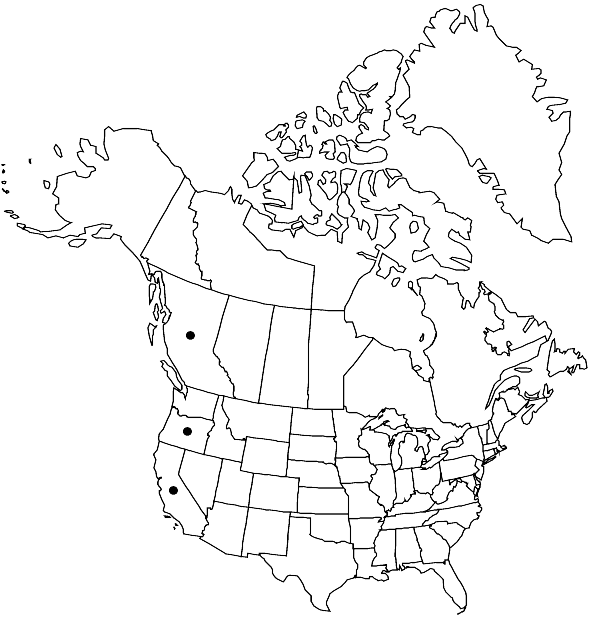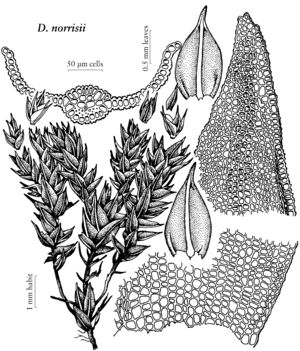Difference between revisions of "Didymodon norrisii"
Bryologist 102: 112, figs. 1–11. 1999,.
imported>Volume Importer |
imported>Volume Importer |
||
| Line 45: | Line 45: | ||
|publication year= | |publication year= | ||
|special status= | |special status= | ||
| − | |source xml=https:// | + | |source xml=https://bitbucket.org/aafc-mbb/fna-data-curation/src/2e0870ddd59836b60bcf96646a41e87ea5a5943a/coarse_grained_fna_xml/V27/V27_786.xml |
|subfamily=Pottiaceae subfam. Barbuloideae | |subfamily=Pottiaceae subfam. Barbuloideae | ||
|genus=Didymodon | |genus=Didymodon | ||
Latest revision as of 21:28, 5 November 2020
Plants in nature red-brown, brick or rose red or occasionally blackened distally, red-brown to tan proximally. Stems 1–1.5 cm, central strand present. Stem leaves appressed when dry, spreading and not keeled when moist, monomorphic; ovate to ovate-lanceolate, adaxial surface broadly concave across leaf and sometimes narrowly channeled near apex, 1.2–1.5 mm; base weakly differentiated in shape, broadly ovate, sheathing at insertion; margins recurved in lower 2/3–3/4, minutely crenulate by projecting cell walls; apex acute to short-acuminate, occasionally broken off; costa percurrent, strong, often weakly spurred, without an adaxial pad of cells or this weakly developed, adaxial cells quadrate from apex to near insertion, in 6-10 rows, guide cells in 2 layers; basal laminal cells not differentiated or of 2–5 rows of slightly larger cells, walls of basal cells evenly thickened, quadrate to short-rectangular; distal laminal cells 9–13 mm wide, 1:1(–2), often transversely elongate near proximal leaf margins, papillae of 2–4 hemispherical salients per cell or essentially absent and cells appearing broadly mammillose, lumens rounded-quadrate to ovate, walls evenly thickened and convex on both sides of lamina. Specialized asexual reproduction by fragile foliose stem tips. Seta 1. 1–1.4 cm. Capsule 1.5–2 mm; peristome teeth apparently absent or rudimentary. Spores 10–13 µm. Distal laminal KOH reaction deep brick or rose red.
Phenology: Capsules mature May.
Habitat: Rock, outcrops, calcareous and volcanic boulders, fields, cliffs, runoff areas
Elevation: low to moderate elevations (200-1500 m)
Distribution

B.C., Calif., Oreg.
Discussion
Didymodon norrisii is known only from four localities—California, one station each in Oregon and coastal British Columbia—and is quite distinctive. In addition to the characters given in the description, the leaves are reflexed above a very short-sheathing basal collar, the abaxial cells are quadrate in distal 4/5 of leaf, the costal transverse section is rounded-elliptical, the adaxial stereid band is absent, and there are 5–6 guide cells (4 in an abaxial layer and 1–2 in a second, adaxial layer). Sporophytes are uncommon, and the short-conic operculum is of cells in nearly straight rows.
Selected References
None.
